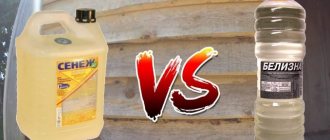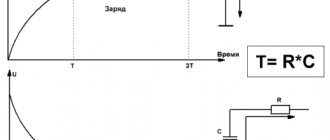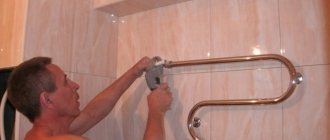How long does polyurethane foam take to dry, how long does it harden?
In order to seal joints and joints, thermal insulation and moisture insulation work is carried out, and polyurethane foam is widely used in construction.
This material will easily adhere to various types of surfaces, has an incredibly long service life, and is also highly durable. Polyurethane sealants can be easily applied using a construction gun.
In order to carry out the final treatment of areas treated with foam, you need to know how long the polyurethane foam takes to dry. This parameter will depend on various conditions - the quality of the sealant, the conditions of use and the type of material.
Application of polyurethane foam without moisturizing
The hardening process of polyurethane foam occurs at a humidity level of at least 40 - 50%. If there is insufficient moisture content in the air, the composition will be less able to gain volume. Construction work is not always carried out in ideal conditions, so the surface must be moistened with a spray bottle before application.
Factors influencing how long it takes for foam to harden and dry
Understanding the process of action of polyurethane foam will allow you to judge the drying speed:
- after leaving the cylinder, the volume of the composition immediately increases, i.e. primary expansion occurs, which allows filling all the cracks and crevices in the structure being treated;
- exposure of foam to air ensures secondary expansion;
- the surface film is formed within a few minutes, depending on the composition, type and manufacturer, the average is 15-20 minutes;
- It is possible to cut off excess foam within four hours;
- the chemical process is completed within 24 hours, complete polymerization occurs on average after 24 hours.
Foam Soudal Construction and Repair 500 ml. Photo Petrovich
However, often these indicators can vary , and within significant limits. This is due to several factors:
1) Drying time is affected by the recommended application temperature . Each type of composition has its own indicators: minimum and maximum. Summer foams are used at positive temperatures, at least +5 degrees Celsius, up to +30-35. Winter ones can be successfully used at significant low temperatures, down to -28 degrees. All-season ones are suitable for use in both summer and winter. However, despite this information, there are optimal conditions under which it is possible to obtain the best result. After all , the higher the ambient temperature, the faster the foam dries . Therefore, it is recommended to apply foam when the thermometer readings are from +5 to +25 degrees. Some experts call the figure +10 degrees, and many manufacturers recommend carrying out work at a temperature of +23.
2) Ambient humidity. Polymerization occurs when exposed to moisture in the air. If it is dry and warm indoors or outdoors, then humidity is minimal. As a result, the foam will not expand to the maximum (indicated) volume. At normal air humidity, for example, Soudal considers 60% optimal, the formation of a surface film will take 20-30 minutes, curing - four hours, and complete polymerization - 12 hours. However, in most cases it takes 24 hours for final hardening.
Reference. The time of complete polymerization is the time during which all chemical reactions in the foam complete and it acquires its final structure.
3) Layer thickness. Ideal temperature and air humidity ensure drying of the 50 mm thick installation layer. within three hours. Complete polymerization will occur in at least 12 hours. It is recommended to treat thick seams after 24 hours.
Reference. The initial treatment time is the time after which the foam hardens enough to subject the seam to mechanical processing: trim off excess, prepare for painting or putty.
Numerous experiments demonstrate that moisture can penetrate into frozen foam to a depth of no more than 3 cm. Penetration of moisture to layers deeper than 3 cm is difficult. Therefore, the diameter of the seam applied in one pass should not exceed 6 cm. Otherwise, the middle of the seam may not fully polymerize and a void will form there, which deteriorates the properties and increases the risk of destruction. Therefore, filling deep seams must be done in layers. The second layer must be applied after a crust has formed on the first. The surface of the first layer must be moistened.
Household mounting foam Makroflex 500 ml. SHAKETEC. Photo by Maxidom
4) Type of cylinder. Polyurethane foam is sold in aerosol cans of various sizes. High quality containers are equipped with blocking valves that return to their original position when the foam supply stops. As a result, air does not pass into the cylinder, and carbon dioxide does not escape from the container.
5) Surface type. Certain surface features may affect the rate at which the composition hardens. Irregularities, defects, and differences in altitude do not allow obtaining a layer of uniform thickness. As a result, the time for 100% drying of the seam increases.
How to speed up drying, how to dry faster
To obtain high-quality results and reduce the time of complete polymerization, it is recommended to carry out work under optimal conditions . But this is very difficult to achieve. Therefore, there is one effective way . The polymerization process is affected by moisture. Liquid increases adhesion, so before carrying out work it is necessary to spray the surface on which the foam will be applied. In addition, periodic wetting of the joints with polyurethane foam is recommended.
How long does it take to harden, how long does it take for initial and complete drying?
The exact time of initial drying and complete polymerization , if not impossible, to determine and imagine Moreover, this statement applies to any types and variants of foams, regardless of purpose, composition, or manufacturer. Since the duration depends on the conditions of use . We indicated the approximate indicators earlier, but it is possible to present other approximate parameters:
Professional foam, placed in a gap 30 mm deep, hardens in about half an hour , and household foam takes about 60 minutes to harden. Complete drying takes about a day. In a humid and warm room, complete hardening can occur twice as fast, i.e. in 12 hours. In any case, it is recommended, if time permits, to increase the waiting period and not proceed with primary processing.
How long does it take for foam to dry when installing doors and more?
The previously presented foam drying indicators are relevant for various types of work. However, it is also possible to provide individual parameters for individual jobs in which polyurethane foam is used especially actively:
- After foaming the cracks of the door frame, it is not recommended to use (open and close) the doors for 3-4 hours . It takes at least 9 hours to completely harden
- When installing windows, the average drying time of the foam is approximately 3-5 hours , the appearance of a hard crust occurs after 20-30 minutes , and complete polymerization can last 24 hours.
The container was not shaken before use
The composition of polyurethane foam includes a prepolymer, which is a mixture of substances and a gaseous propellant. All components have different densities, so they are distributed unevenly in the container. To bring the foam into working condition, they must be mixed. Manufacturers recommend vigorously shaking the canister 20–30 times. In this case, you need to hold the cylinder upside down. Shaking a foam container without a nozzle can lead to spontaneous release of the polymer composition.
How to scrub with special preparations?
There are a lot of specialized compounds on sale that are designed to remove residues of polyurethane foam from various surfaces. All of them are quite effective and give positive results.
However, when choosing the appropriate option, you should carefully study the information on the packaging - some compounds are safe for some materials, but aggressive towards others.
If you do not pay attention to the composition or purpose of a particular product in advance, you can ruin the plastic surface. The plastic will survive, but the gloss may disappear, a matte rough spot will appear, and the lamination will dissolve. Therefore, you need to have some idea about the most effective and popular formulations. Let's look at them separately:
Liquid for flushing the mounting gun
This is a special cleaner designed to remove residual foam from the mounting gun. As a rule, the manufacturers of such compositions are the same companies that make the foam.
The active substance is usually dimethyl ketone . Available in the form of aerosols, designed to be attached to a mounting gun in a standard way.
To clean foam from a plastic window, it is best to use a mounting gun - this makes it easier to apply the composition to the contaminated area or a napkin. You can also install a special nozzle (it comes with the bottle) and use the spray in the usual way.
It is necessary to take into account that the composition is chemically active. Do not use colored rags - the dye may dissolve and leave a stain on the plastic that can only be scraped off later.
Kudo Foam Remover
KUDO is a Russian company specializing in the production of various chemical compositions for household, construction and finishing works. The company's arsenal includes adhesives, polyurethane foam, sealants, paint and varnish products, etc.
Alternative opinion
“FOAM REMOVER” is a cleaner for polyurethane foam, glue, paint and varnish products, and other chemical materials. It most effectively removes compounds made on the basis of polyurethane.
The product is designed to work in the temperature range of +5 to +35 °C. The composition is applied to the surface of the problem area and left for about half an hour. Then wipe the surface with a dry cloth, removing any remaining softened foam.
Before starting work, you need to check the effect of the composition on plastic in an inconspicuous place. It is not recommended to apply the composition in areas where there is no foam - you can damage the surface of the plastic.
Soudal
Soudal is a family-owned company from Belgium, which is one of the largest manufacturers of polyurethane sealants, seals, polyurethane foam and other types of similar products.
Soudal Foam Cleaner is designed to remove material from all surfaces, as well as skin and hands or tools. The product is designed to work with fresh foam and is available in the form of aerosols or gel paste.
The paste is equipped with a special brush and spatula for applying to the surface and removing softened foam. The aerosol is designed to be connected to a mounting gun, but is additionally equipped with a tip for manual feeding.
The manufacturer warns that the composition is dangerous for varnished surfaces and is active against many types of plastic. Before use, you should test it on an inconspicuous area of the window to eliminate the risk of damage to the surfaces.
Polynor Cleaner
The Polinor cleaner is designed for the rapid removal of fresh, non-polymerized polyurethane foam (Polinor or another type).
Available in aerosol form. It has a special connecting element for cleaning the mounting gun, and is also equipped with a nozzle for manual spraying on contaminated areas.
The standard method of use is either washing the gun (2 pulls of the trigger at intervals of several minutes), or manual application to the contaminated area, followed by wiping with a dry, clean cloth. It is necessary to use products to protect the skin and mucous membranes, since the product contains active chemical components.
Isofoam R621
A product of the Russian company Iso-chemicals, the Isofoam R621 cleaner is designed for cleaning mounting guns or manually removing polyurethane foam stains. The product is designed to work with unhardened material.
The composition includes a mixture of acetone solvents. Before application, it is necessary to check how ready the window plastic is for contact with such material. The cleaner is available in 500 ml cylinders equipped with an adapter for connecting to a mounting gun and a nozzle for manual spraying.
It leaves no traces on the surface (if the composition is neutral in relation to the base). Storage is allowed in the temperature range from -20 to +40 °C.
Macroflex
The Macroflex brand belongs to the German company Henkel. The trademark was registered in 1978. The company's product range consists of insulation materials, polyurethane foam, and sealants. In addition, the company produces a cleaner for polyurethane foam, as well as paint and varnish products and other polymers.
The cleaner consists of acetone and butyl acetate, which makes it dangerous for some types of plastic. Before applying to a PVC profile, you must ensure that the material is ready for contact with such solvents.
Not recommended for use on laminated or glossy surfaces. It cleans only unhardened foam, but hardened stains can also be softened by moistening them and covering them with a rag for a few minutes.
Cosmofen
The Cosmofen brand belongs to the German company Weiss. This is a special composition designed for treating plastic surfaces and removing remnants of polyurethane foam, adhesives, adhesive layers from adhesive tape and protective film.
The product does not have solvent properties and gently treats problem areas. Laminated surfaces can be cleaned.
The composition includes a mixture of aliphatic carbons. There is also an antistatic agent that makes the treated surface free from electrified small debris, dust, and hair. Available in cylinders of 500 mg and 1 liter.
Gasoline, white spirit and stain remover
Using gasoline, mineral spirits, and other benzene-based products (such as stain remover) is considered an effective and cheap way to get rid of dried foam residue.
However, practice does not justify this popular opinion . White spirit is practically neutral, gasoline slightly loosens the foam, and the stain remover is practically incapable of affecting the contaminated area. Cleaning results are slightly better if the foam is fresh. Then you can remove it (gasoline is the most effective).
The only advantage of these materials is that they are gentle on the base - there are practically no traces left. However, you should not completely rely on the neutrality of the materials - you should always check in an inconspicuous place how well the plastic copes with the cleaner.
Heating a cylinder on a gas stove
The container must be heated to the desired temperature at room temperature or in warm water. Do not heat foam on a gas stove or other sources of open fire. Propelled gas is flammable and easily explodes; if the cylinder ruptures, all the foam will end up on furniture and clothes.
It is not recommended to burn old cylinders in a fire. You should not smoke or use other open flame sources near them. Read more about the composition of polyurethane foam in the article “What does polyurethane foam consist of”
How to remove the old one after polymerization?
Polyurethane foam has high adhesion to almost all solid materials. Hardened foam can only be removed mechanically. This will not help to finally resolve the issue, but it will be quite easy to remove the excess. You can use a utility knife blade or other cutting tool.
The main task is not to scratch the plastic. If possible, it is better not to touch it at all. In such cases, some craftsmen cover the problem area with masking tape to protect the plastic from possible damage.
Sometimes a regular razor blade helps remove a thin layer of foam. It is used as a scraper, lightly squeezing with your fingers to obtain a slight bend. You must act extremely carefully so as not to scratch the plastic or cut off chips from it with a sharp edge.
There are tips online for removing foam with fine sandpaper and then polishing the plastic. Perhaps this will give a positive result, but if you have never had to perform such actions before, it is better not to try. Most likely, instead of foam, a scratched spot will appear, which cannot be polished.
Once the excess has been removed, the residue can be removed with special chemicals. You can also use any methods from the “folk” arsenal. Let's take a closer look at them:
Vinegar and essence
This is one of the “folk” ways to remove polyurethane foam. Vinegar is in every home, it is inexpensive and available to everyone. It is necessary to take into account that it shows maximum effectiveness when removing fresh foam; old traces are much more difficult to wash off with vinegar.
As a rule, table (diluted) vinegar is used; using the essence is quite dangerous - it can leave traces. It is especially dangerous if the essence gets on laminated surfaces - the film can dissolve along with the remaining foam.
Before starting the procedure, it is recommended to check the reaction of the plastic to vinegar somewhere in an inconspicuous place. If no problems arise, you can start cleaning.
Procedure:
- soak a cotton swab or a clean cloth in a vinegar solution and wipe the problem area
- You may not be able to get the desired result the first time. The procedure is repeated, you can rub the contaminated area (but do not use excessive force)
After traces of foam have been removed, wipe the surface with a damp cloth (this is not necessary, but recommended, since after such cleaning previously unnoticed traces of foam can be detected).
Hot vegetable oil
This method of removing foam can be considered the safest for plastic. Everyone has oil; it only takes a little to clean it. Procedure:
- Heat a small amount of oil in a water bath to a temperature of 40-45 °C
- moisten a soft cloth or cotton pad
- wipe the contaminated area
To clean dried foam, apply a little oil to it and cover the stain with a dry cloth (to maintain the temperature). After half an hour, the rag is removed and the stain is carefully wiped off with a clean rag. Then you need to wash off the remaining oil with warm water and soap.
Dimexide
This is a medicine that can be bought at any pharmacy. Inexpensive, but very effective composition for cleaning fresh or dried foam. Suitable for cleaning PVC, glass, metal. It is not recommended to try to clean wooden or varnished surfaces.
Procedure:
- Using a knife or other blade, carefully cut off pieces of foam. It is necessary to remove it as much as possible without damaging the surface
- The drug "Dimexide" is applied to a piece of rag and wiped the problem area. If the foam is hard and does not give in, you can apply a little of the drug to the stain, cover with a cloth and leave for 10 minutes.
- wipe off the dissolved foam
- wash off the remaining drug along with the dissolved foam with warm soapy water
It is necessary to take into account that the drug is quite active, so you must wear rubber gloves and avoid getting the product on the skin or mucous membranes.
Solvent
Polyurethane foam is quite easily dissolved with acetone or other solvents of this series (645, 646, 647). However, it is not recommended to use them for cleaning.
In any case, you need to check the effect of the solvent on the plastic by applying a small amount somewhere in an inconspicuous place. If no traces remain, you can gently clean the contaminated area.
There is no need to worry that the composition will corrode the plastic profile. However, most often solvents leave dull stains.
Procedure:
- Apply a little solvent to a cotton pad
- Gently rub the stain, being careful not to apply too much force.
When the result seems satisfactory, you can wipe the surface with a damp cloth.
Solvents or acetone should not be used on laminated surfaces. They will dissolve the film and ruin the appearance. We need to look for other methods.
Foaming seams larger than 10 cm
To seal a seam up to 5 cm, one layer of polyurethane foam is sufficient. When foaming a 5–10 cm seam, the foam is applied in two layers. For seams over 10 cm, it is better to use additional elements, this increases the strength of the connection. Bricks and bars can serve as additional elements.
Read more about working with polyurethane foam in the article “How to use polyurethane foam correctly”
Average prices in the Russian Federation
Among the most popular options for polyurethane foam are the following :
- Instant installation – from 250 to 300 rubles.
- Makroflex - from 325 rubles.
- Soudal - from 295 rubles.
- Penosil - from 285 to 315 rubles.
- Titan - from 345 rubles.
Note. It must be taken into account that the cost is determined not only by regional characteristics, but also by markups of individual stores.
Working with the cylinder with the valve down or in a horizontal position
The bottom of the cylinder should be directed upward, so the propellant gas will put pressure on the contents. This will ensure a high yield of material. This rule is often violated with household foam.
Working with a household cylinder
Working with professional polyurethane foam
For household foams, a disposable tube is used. All work must be completed in one go. You can install a mounting gun on professional foam.
With professional foam, the most common mistake is when holding the container in a horizontal position. This often happens due to uncomfortable working conditions. For example, when the cylinder rests on the ceiling. In this case, you can install a thin flexible tube at the end of the gun, which will allow you to hold the cylinder upside down.
Manufacturers rating
Since sealing joints in rooms with high humidity is one of the most popular procedures, many manufacturers of professional polyurethane foams produce their products in two versions - standard and waterproof. Among them there are products for different temperature conditions. Before purchasing, you should read the rating:
- A wide range of waterproof polyurethane foams is produced by the Polish company Tytan . Among them there are summer and winter, professional and household options. They are well suited for heat and sound insulation work. Some products contain antibacterial components that prevent the contamination of surfaces by mold and mildew.
- Hauser company produces all-season foams that can withstand extreme frosts (down to -50 degrees). However, you cannot work with them in such conditions: during installation and for 24 hours after that, the air temperature should not fall below -10 degrees. After hardening, the foam can be trimmed, plastered, or painted. It sets quickly - within 5-10 minutes.
- Makroflex is an Estonian brand that produces a wide range of waterproof foams in cans of different sizes: with a tube and for a gun, for winter and summer. Before opening, the bottle can be stored for one year from the date of manufacture. Professional compositions are resistant to precipitation. They can be painted and plastered without primer.
- The Belgian company Soudal produces waterproof household foams - polyurethane and prepolymer. The latter are intended for winter use and have excellent performance properties: vapor permeability, resistance to fungus and mold, extreme frosts and even ultraviolet radiation. The line includes options that are not subject to fire. Installation of this product is carried out at a temperature not lower than -10 degrees.
Sealant cannot be applied to some types of materials. These include silicone, polyethylene, Teflon products, as well as items coated with oil or grease. Foam does not stick to these materials in principle.
Improper storage of a foam container
During breaks in work, you must not remove the gun from the container, because of this the foam in the valve will dry out and the container will become unsuitable for work. You can clean the valve with acetone or carburetor fluid if not much time has passed since the last use.
For proper storage, place the container in an upright position and screw the valve on the gun.
Most household cylinders cannot be stored after use - all work must be completed at once.
Traditional methods
You can dissolve polyurethane foam at home with medicinal preparations. For example, "Dimexide". Sold in pharmacies without prescriptions. Dimethyl sulfoxide is not an expensive drug. It should be used carefully by people with sensitive skin. The medicine can be absorbed into the blood through the skin and affect well-being. It is better to put on the seals before work.
The solution should not be diluted. The concentrate is applied to the area of hardened material and left for up to 30-40 minutes. After this, it is wiped and cleaned with a sharp object (brush, knife). You can dissolve the mounting foam that has dried in the gun inside the outlet tube by pouring Dimexide inside it.
The drug is also used to clean clothes from installation building materials. Also, apply for 40 minutes and clean with a dry cloth. After the procedure, be sure to wash your clothes!
An oil solution is used to clean plastic. Vegetable oil is applied to the device and left for half an hour. Then the same manipulations: wiping and stripping.
Specifications
As mentioned above, various types of work are performed with the help of polyurethane, this not only applies to the installation of windows and doors, this building material is used to seal dimensional cracks, fill voids and fix structures. If you familiarize yourself in detail with all its positive properties, you can conclude that it can be compared with other sealing substances due to its ability to qualitatively seal the desired surfaces.
Before considering the issue of drying time for polyurethane foam, it is recommended that you familiarize yourself with the characteristics of the indispensable construction sealant, its properties and features.
Output volume
This indicator demonstrates how the material has changed compared to its original state. This volume is measured in liters. The main aspects influencing this indicator are the air temperature and humidity of the structure being finished.
Surface adhesion
This parameter helps determine the quality of adhesion of the material to the coating. The exception applies only to surfaces such as grease coatings, polyethylene, silicone, Teflon, etc.
Viscosity coefficient
This indicator will depend largely on the quality and quantity of components used to make the material. This characteristic is also influenced by external factors - temperature. It is recommended to work with the substance according to the instructions, which indicate the exact data and permissible air temperatures.
If you use the sealant outside the specified limits, it will lose its basic properties, and the initial product will not meet all the requirements.











